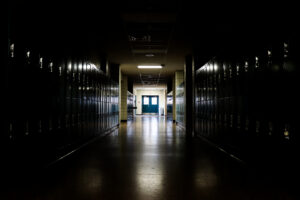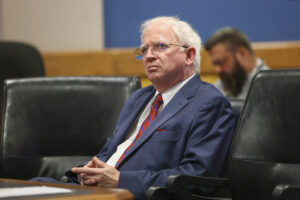Drought Deepens Dramatically in Southern California
In another dry winter, one-fourth of the state's population is now under severe drought conditions, the U.S. Drought Monitor reports.PHILLIPS STATION, Calif.—California is rapidly plunging back into drought, with severe conditions now existing in Santa Barbara, Ventura and Los Angeles counties — home to one-fourth of the state’s population, a U.S. agency said Thursday.
The weekly report released by the U.S. Drought Monitor also shows 44 percent of the state is now considered to be in a moderate drought. It’s a dramatic jump from just last week, when the figure was 13 percent.
“It’s not nearly where we’d like to be,” Frank Gehrke, a state water official, said after separately carrying out manual measurements of winter snowfall in the Sierra Nevada, which helps supply water to millions of Californians.
Overall, the vital snowpack stood at less than a third of normal for the date.
California lifted a drought state of emergency less than a year ago. A rainy winter snapped a deep five-year drought that forced water conservation.
The figures from the federal agency came amid growing concern among state officials about another dry winter.
The dry spell is acute in Southern California. Los Angeles and some surrounding areas have received only one significant storm in nearly a year. The region is now seeing record-setting heat.
The reading detailed Thursday shows the drought has significantly worsened in 5 percent of the state.
California’s water managers trekked to the mountains to check the snow depth — one gauge of the state water supply. Electronic sensors show statewide snow levels at 27 percent of normal.
At the peak of California’s recently ended five-year drought, Gov. Jerry Brown ordered 25 percent water conservation in cities and towns.
Heavy rains in Northern California last year finally snapped the drought, and Brown declared the emergency over in April.
But the drought never really seemed to end in some Southern California areas, notes Daniel Swain, a climate scientist at University of California, Los Angeles.
In Ventura and Santa Barbara counties, which are about 100 miles (160 kilometers) north of Los Angeles, the lack of rain and dry vegetation were perfect fuel for a December wildfire that grew to become the largest recorded in state history. When it finally rained, the scorched earth turned into deadly mudslides.
Doug Carlson, spokesman for the state’s Department of Water Resources, which carries out the snowpack surveys, said the dry weather is a growing concern, although reservoirs are still fuller than usual thanks to last year’s rain in Northern California.
Your support matters…Independent journalism is under threat and overshadowed by heavily funded mainstream media.
You can help level the playing field. Become a member.
Your tax-deductible contribution keeps us digging beneath the headlines to give you thought-provoking, investigative reporting and analysis that unearths what's really happening- without compromise.
Give today to support our courageous, independent journalists.






You need to be a supporter to comment.
There are currently no responses to this article.
Be the first to respond.